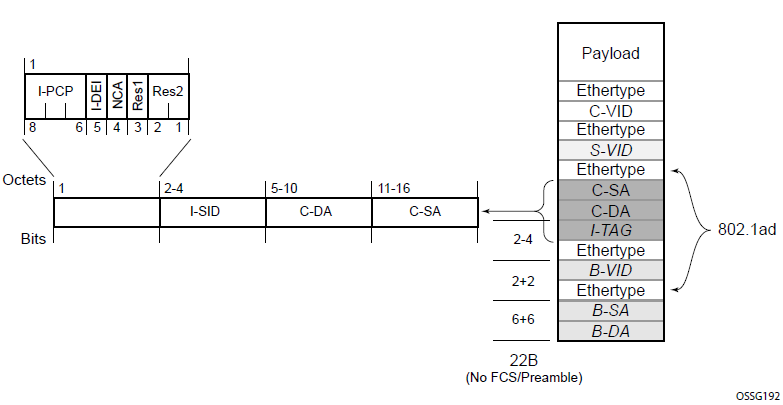The IEEE model for PBB is organized around a B-component handling the provider backbone layer and an I-component concerned with the mapping of the customer/provider bridge (QinQ) domain (MACs, VLANs) to the provider backbone (B-MACs, B-VLANs). For example, the I-component contains the boundary between the customer and backbone MAC domains.
The Nokia implementation is extending the IEEE model for PBB to allow support for MPLS pseudowires using a chain of two VPLS context linked together as shown in the following figure.
7210 SAS does not support MPLS pseudowires in a PBB B-component and PBB I-component.

I-PW and B-PW are not supported on 7210 SAS platforms.
A VPLS context is used to provide the backbone switching component. The white circle marked B, referred to as backbone-VPLS (B-VPLS) operates on backbone MAC addresses providing a core multipoint infrastructure that may be used for one or multiple customer VPNs. The Nokia B-VPLS implementation allows the use of native PBB infrastructures.
7210 SAS implementation allows the use of only native PBB over Ethernet infrastructures.
Another VPLS context (I-VPLS) can be used to provide the multipoint I-component functionality emulating the ELAN service (refer to the triangle marked ‟I” in the preceding figure). Similar to B-VPLS, I-VPLS inherits from the regular VPLS and native Ethernet (SAPs) hand-offs accommodating this way different types of access: for example, direct customer link, QinQ or H-VPLS.
To support PBB ELINE (point-to-point service), the use of an Epipe as I-component is allowed. All Ethernet SAPs supported by a regular Epipe are also supported in the PBB Epipe.